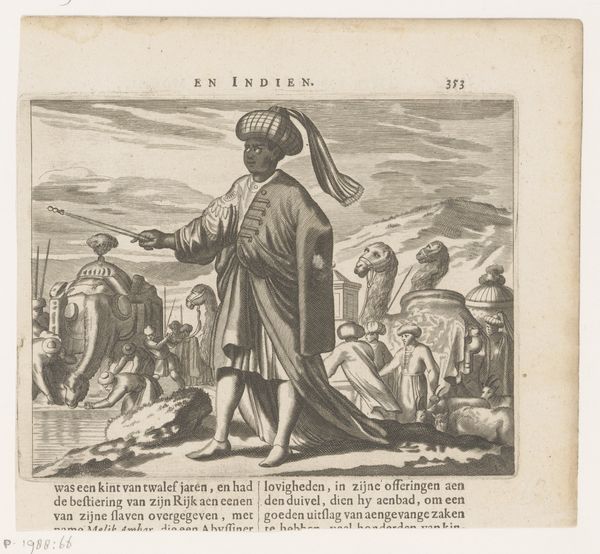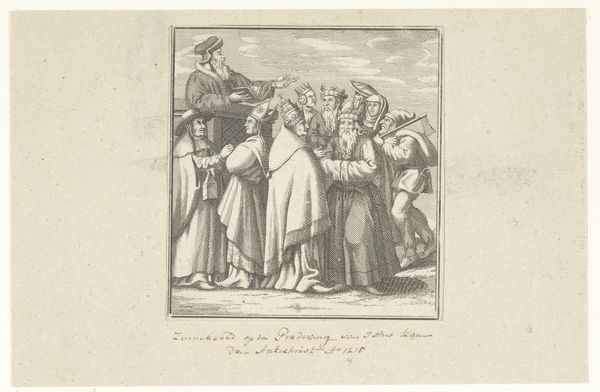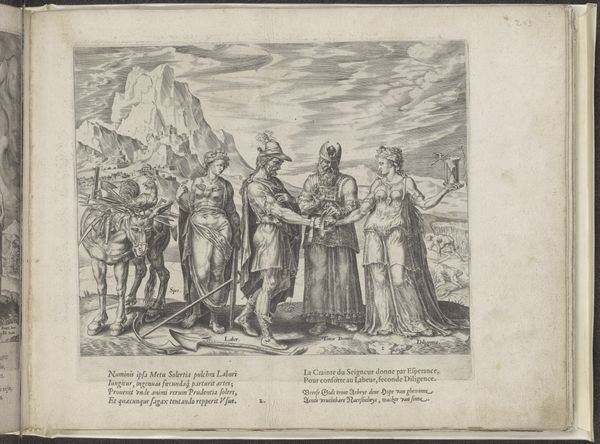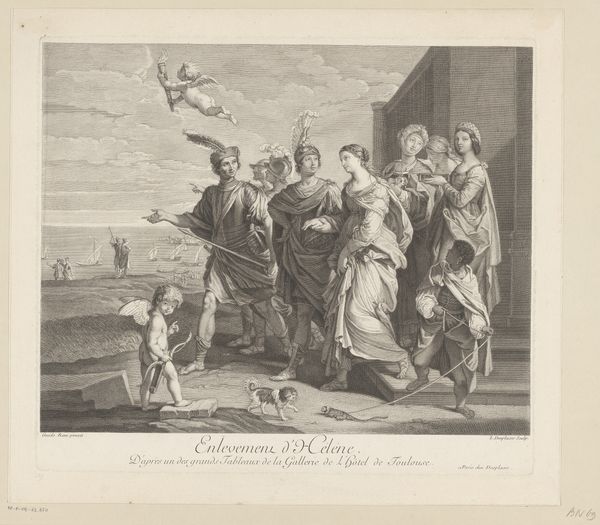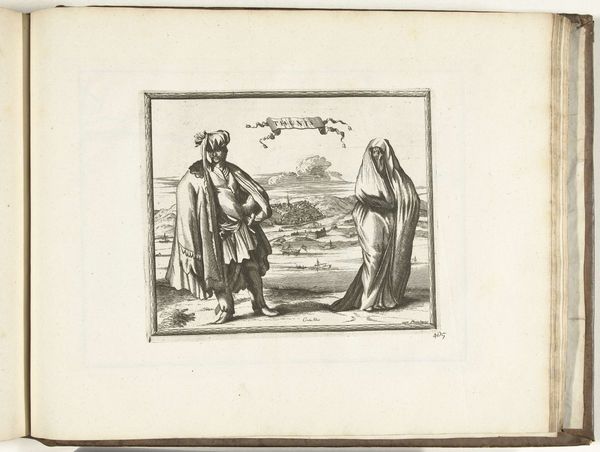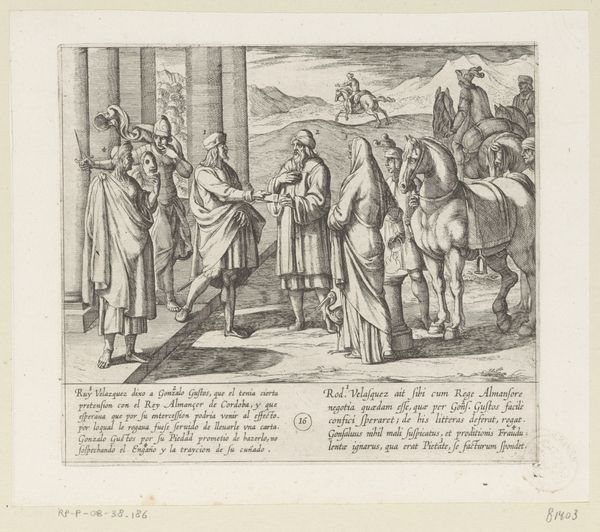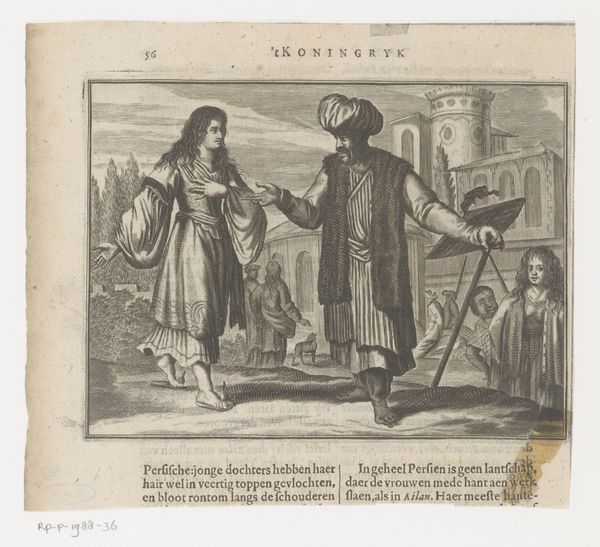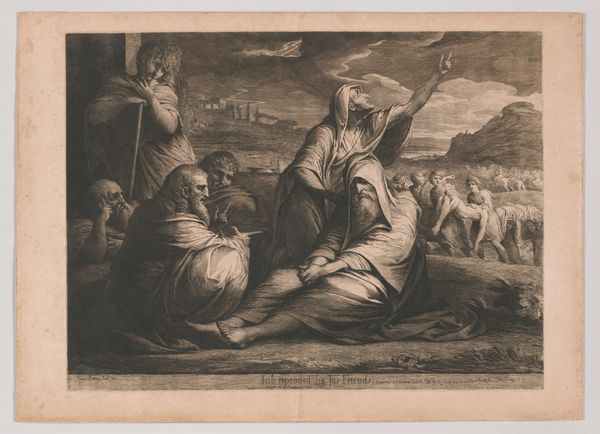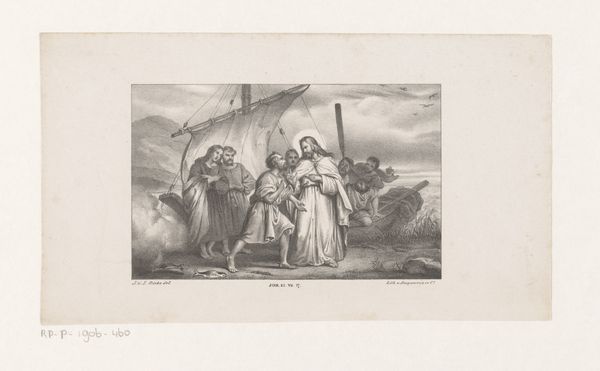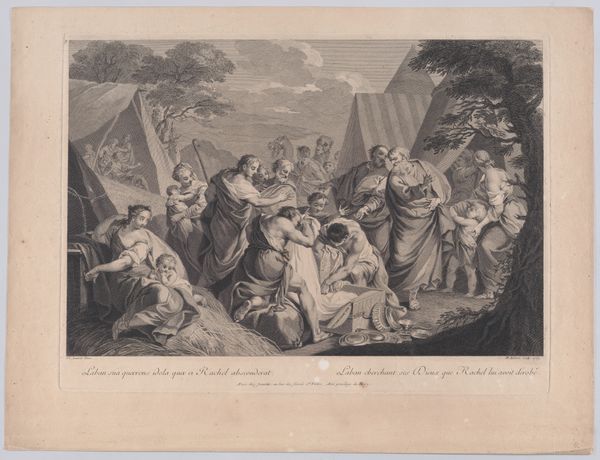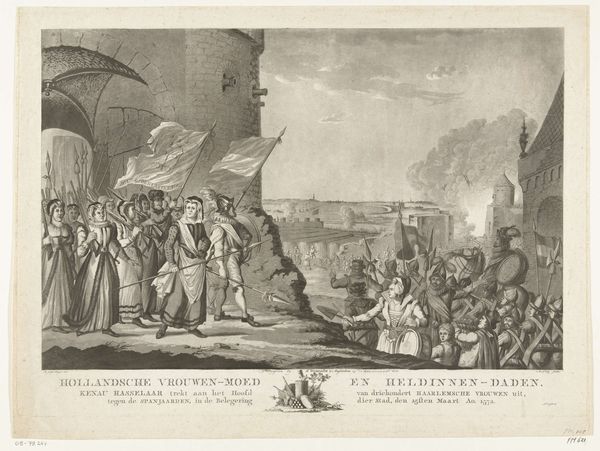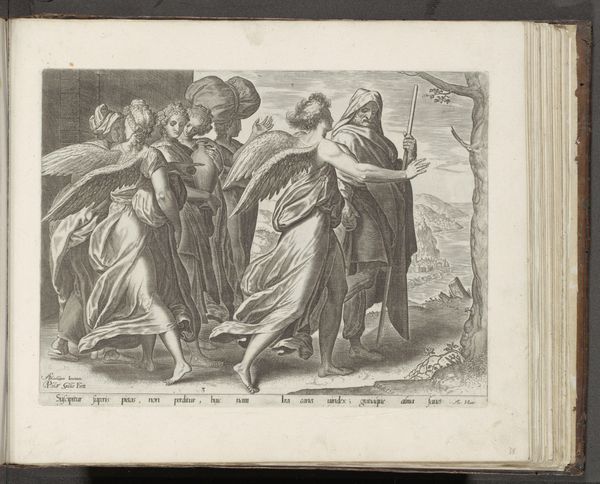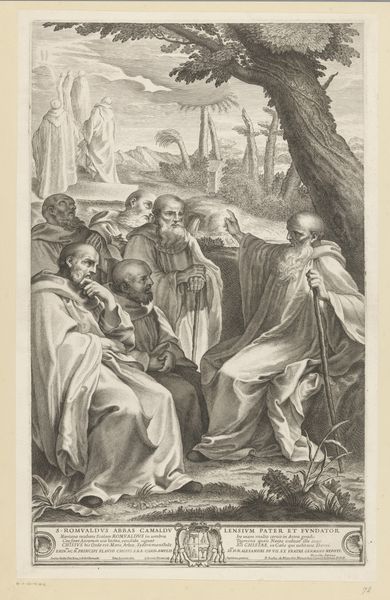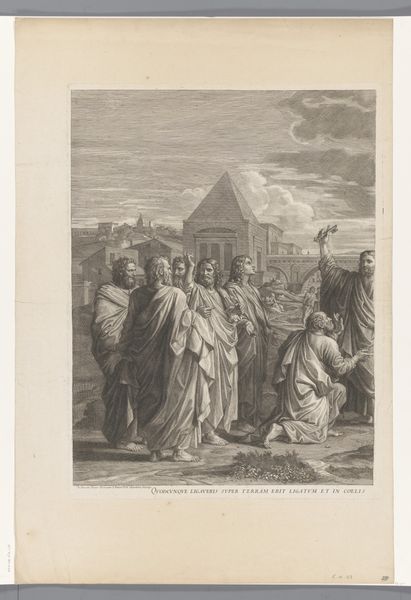
engraving
#
baroque
#
islamic-art
#
history-painting
#
engraving
Dimensions: height 130 mm, width 170 mm
Copyright: Rijks Museum: Open Domain
Curator: Looking at this engraving titled “Perzische klederdracht,” or "Persian Costume" from 1672, I'm immediately struck by the way it tries to capture something distant and exotic. What do you make of its overall feel? Editor: There's a dreaminess to it, wouldn’t you agree? I mean, these figures seem plucked from a tale, the rendering feels deliberately quaint, despite its obvious aim for factual representation. And all those spears poking up in the background - hints of narratives untold... almost surreal. Curator: It's true, the scene possesses a romantic quality, one very much in line with the Baroque fascination for the “Orient,” a blend of scholarly observation and pure projection. See how meticulously they render the turbans, robes, and even the woman’s headwear? Editor: Absolutely. Details upon details - a sort of obsessive dedication… What’s more compelling is how that intensity exists alongside that almost whimsical backdrop; ruins fading, a boy nonchalantly watching… a captivating push and pull between perceived realism and poetic whimsy. What does it tell us about Dutch impressions of Persia back then? Curator: I think it speaks to a fascination, filtered through both trade relationships and a desire to catalogue the world. Engravings like this weren't necessarily about deep understanding, but about visual consumption – a way for Europeans to "possess" knowledge of distant cultures, from Islamic art’s fashion to societal norms, without ever setting foot there. Editor: Ah, that brings another, admittedly conflicting thought to mind: these aren't neutral portraits. These depictions inevitably served certain sociopolitical agendas too, coloring foreignness in a way that bolstered a particular world view. It makes you ponder: what's omitted from these visual reports, in favour of a "richer" storyline? Curator: Precisely! And perhaps the point isn't whether it's "accurate" by our standards, but what stories it told, what desires it reflected, and what role it played in shaping early understandings of a part of the world very different from their own. Editor: Agreed. That consideration makes "Perzische klederdracht" infinitely more intriguing. Thanks for shining that light.
Comments
No comments
Be the first to comment and join the conversation on the ultimate creative platform.
